Celery is an extremely low-calorie plant that contains vitamins, minerals, and other essential nutrients, and it is consumed in a variety of ways.
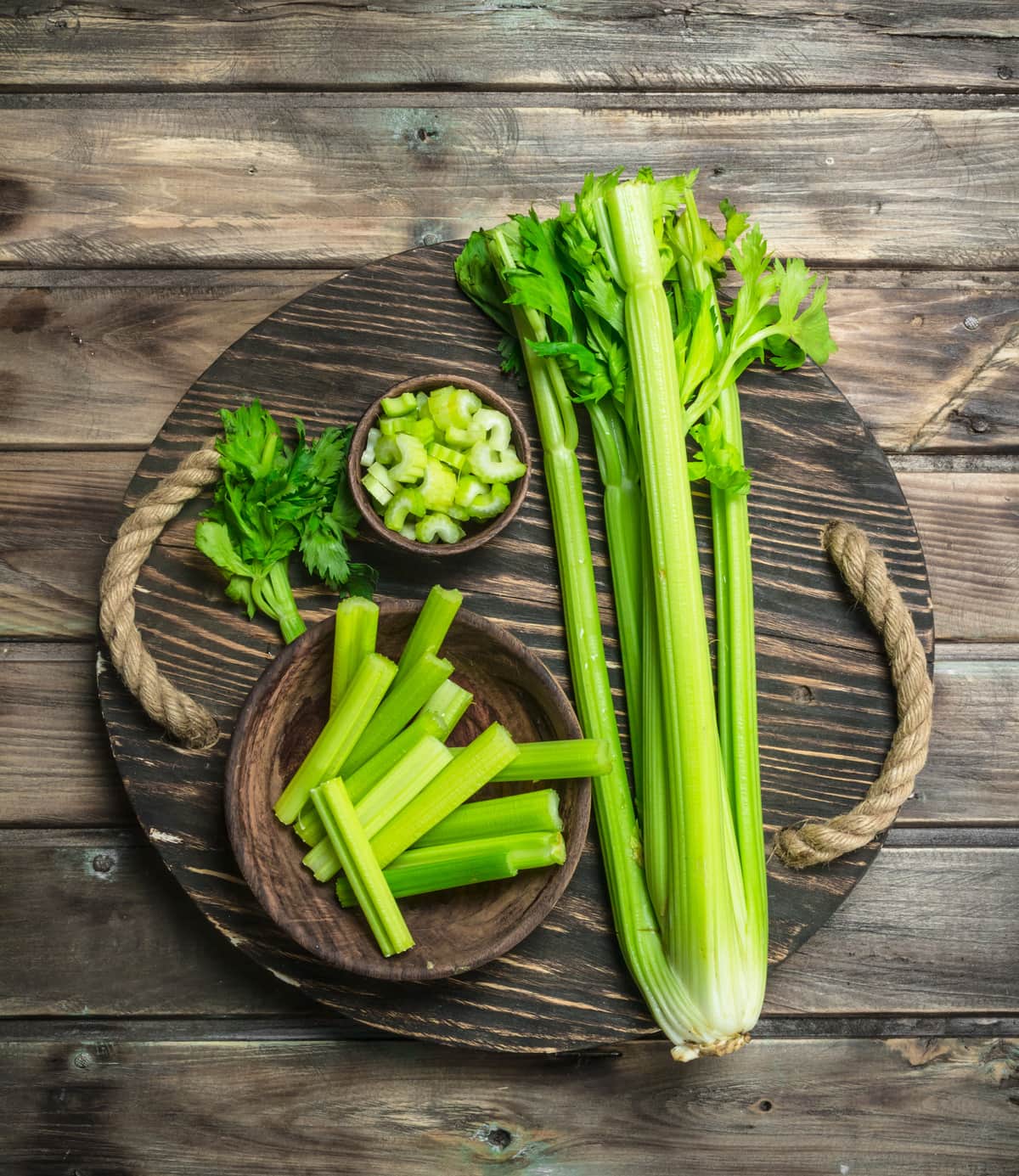
In this article, we will discuss where celery originated from, some of the different varieties of celery, how and where gardeners grow it, some of its health benefits, side effects, and the ways celery is consumed and uses. At the end of the article, we will recommend some of the best, highly nutritious juice and smoothie recipes containing celery.
Table of Contents
Origins And A Brief History
Celery (Apium graveolens) belongs to the Apiaceae or parsley family, which includes anise, carrots, cumin, dill, parsley, and parsnip. The English name originated from the French word celeri and the Italian word seleri, both of which came from the Greek word selinon, meaning parsley.
The celery plant is believed to have come from the Mediterranean region. Furthermore, historians say that celery was originally used as a medicine. According to medieval documents about herbal remedies, early civilizations used celery for controlling hysteria, promoting better sleep, soothing nerves, and treating various conditions, including colds, flu, toothache, indigestion, liver and spleen ailments, hypertension, gout, arthritis, and rheumatism.
Additionally, historians concluded that the French were most likely to have first used celery as a food in the 17th century. While they initially used celery for flavoring, the 18th century saw celery stalks being included in salads. Gardeners also then found that growing celery in cool weather reduced its pungency, which allowed the rich families in northern Europe to enjoy celery during the winter. In 1806, colonists introduced celery to North America, and thereafter, the use of fresh celery as food rapidly spread.
Interestingly, archaeologists have reportedly found woven garlands of wild celery in early Egyptian tombs. Ancient Egyptians used these woven garlands as decorations for mummies or offered as a sacrifice for the dead Pharaohs. Meanwhile, in Ancient Greece and Rome, star athletes received victory crowns woven with celery leaves. And, like beets, Ancient Romans believed celery to be an aphrodisiac.
Types of Celery
Although celery vegetable is well-known in the health world, many people get surprised to hear celery has many varieties. According to experts, celery has three main categories and several varieties under each. One type of celery is grown for its stalks, another for its roots, while the last type is grown for its leaves and seeds.
Stalk Celery
Also known as Pascal celery (Apium graveolens var. graveolens), most people are familiar with this type since it is the most commonly used in the United States. Gardeners typically grow stalk celery for their firm stalks, which can be added to soups or stews, while the leaves can be used in salads. Some common varieties of Pascal celery include:
- Golden Boy, which has short, gold-colored stalks
- Tall Utah, which has long, dark green stalks
- Conquistador, an early maturing variety that does well even in high heat
- Monterey, with dark green stalks that mature even earlier than Conquistador
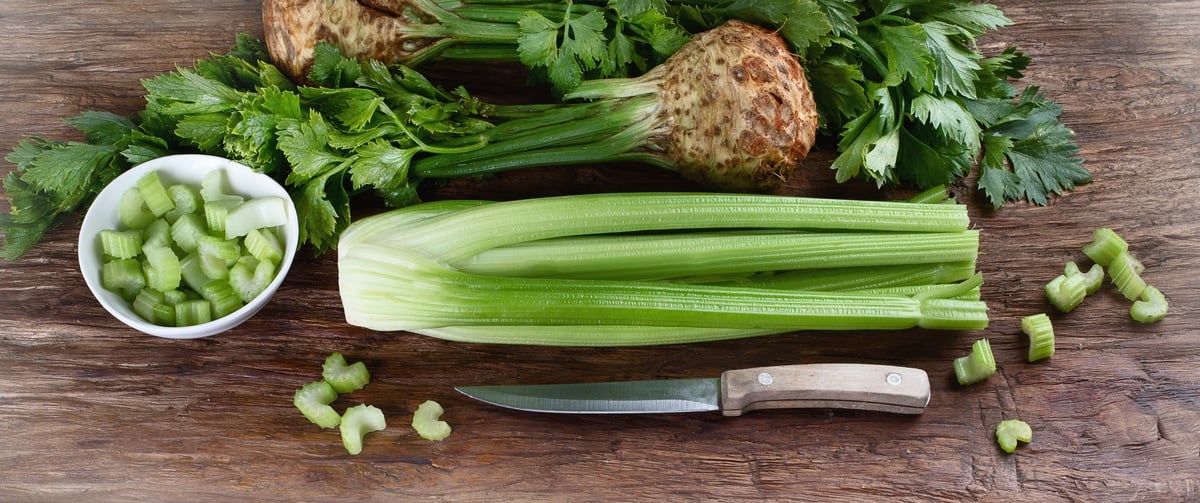
Celeriac
In the United States, this celery type is commonly known as celery root (Apium graveolens var. rapaceum), although it is also known as turnip-rooted celery and knob celery. Farmers grow celeriac for its roots, which have a distinct flavor. Those who consume celeriac first peel the roots before eating them cooked or raw. Some varieties of celeriac include:
- Brilliant, a variety known for its big white root that has few markings
- Marble Ball, the most popular variety of celeriac
- Tellus, known for being easy and quick to grow compared to other varieties
- Globus, which takes time to mature but results in a root twice the size of normal celeriac
Leaf Celery
Also called cutting celery (Apium graveolens var. secalinum), soup celery, or Chinese celery, this type is typically darker, leafier, and has thinner stalks. Gardeners plant these for their leaves and seeds, which have a strong flavor that others use as herbs in cooking. In the United States, leaf celery can only be found in Asian shops and farmers’ markets. Unlike stalk celery and celeriac, this type cannot be eaten raw. Some varieties of leaf celery are:
- Par-Cel, an easy-to-grow heirloom variety that is curly in shape
- Safir, known for its crisp leaves that have a peppery flavor
- Flora 55, a dark green variety that resists bolting
Wild Celery
Many people mistake leaf celery for wild celery because they look almost the same. However, wild celery is inedible. Wild celery grows in brackish water; thus, some people know it as freshwater eel grass or tape grass. Although inedible, wild celery provides many benefits to underwater organisms.
Planting, Growing, and Harvesting Celery
In the gardening world, many argue about whether celery is an herb or a vegetable. The truth is, cooks say, it is a little bit of both. Depending on how it is used or cooked, celery can be classified either as an herb or a veggie. Experts often recommend eating organic or garden-grown veggies over store-bought ones as they have little to no pesticide residue. If you want to grow your own, know that gardeners consider celery easy to grow.
When planting celery, make sure to keep them seven inches apart in rows spaced 24 inches apart. Celery grows best in cool temperature, direct sunlight, and deep, fertile, and moist soil that drains well, but not too quickly. Those who grow celery say that it needs plenty of moisture, especially in warmer areas. When celery receives too little water, the stalks will grow dry and small.
Additionally, gardeners consider celery stalks ready for harvest when they measure at least eight inches in length. To harvest celery, one must use a knife to make diagonal cuts at the bottom of each stalk, removing outer stalks as needed. And, since celery contains 95% water, make sure to store it in plastic bags before refrigerating immediately after harvest. Experts say that the darker the stalks, the more nutrients they contain. However, texture also changes with color, and darker stalks will be tougher than lighter ones.
What Does Celery Contain?
Although celery contains 95% water, it also provides many vitamins, minerals, and essential nutrients. Experts say celery does not provide high amounts of any vitamin or mineral because of its high water content. Nonetheless, celery remains a good source of nutrition as it contains vitamin K, folate, potassium, fiber, and small amounts of vitamin C, vitamin A, and some B vitamins.
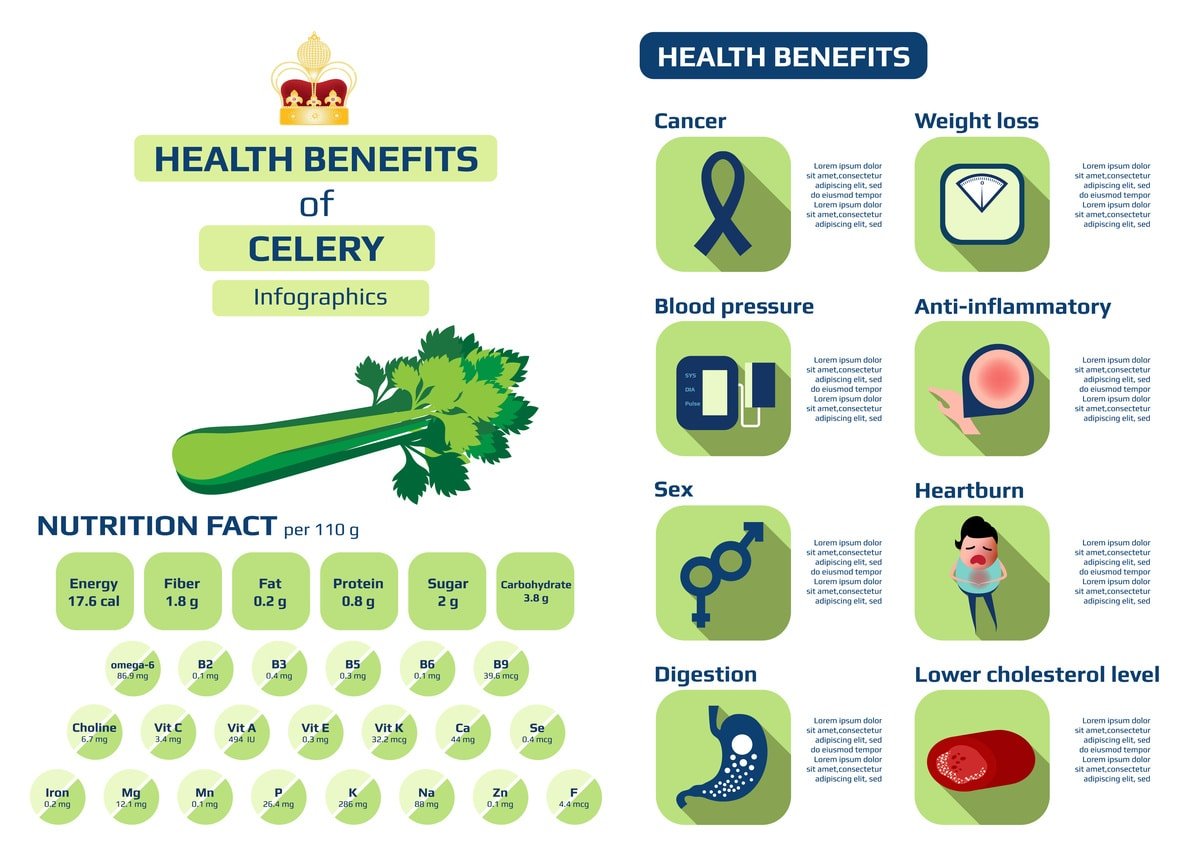
According to the United States Department of Agriculture (USDA), 100g of raw celery contains the following:
- Energy: 14 kcal
- Protein: 0.69 g
- Total fat: 0.17 g
- Carbohydrates: 2.97 g
- Fiber: 1.6 g
- Sugar: 1.34 g
- Sodium: 80 g
- Water: 95.43 g
- Potassium: 6% of the recommended daily value
- Calcium: 4% of the recommended daily value
- Vitamin K: 26% of the recommended daily value
- (Retinol) Vitamin A: 3% of the recommended daily value
- Vitamin B6: 6% of the recommended daily value
- Folate (Vitamin B9): 9% of the recommended daily value
- Vitamin C: 4% of the recommended daily value
On the other hand, if you want to use celery seed as a spice, 1 tablespoon (6.5g) of celery seed contains:
- Energy: 25.5 kcal
- Protein: 1.18 g
- Total fat: 1.64 g
- Carbohydrates: 2.69 g
- Fiber: 0.767 g
- Sugar: 0.044 g
- Sodium: 160 mg
- Water: 0.393 g
- Calcium: 12% of the Reference Daily Intake (RDI)
- Zinc: 6% of the RDI
- Manganese: 27% of the RDI
- Iron: 17% of the RDI
- Magnesium: 9% of the RDI
- Phosphorus: 5% of the RDI
Health Benefits
Although many health enthusiasts love celery for its low-calorie content, the health benefits that it offers go far beyond just aiding weight loss. Celery has grown in popularity not just because has low calories, but also because it provides many health benefits and is overall a good source of nutrition. Additionally, some claim that celery can be used as an aphrodisiac, but experts say that more data is needed before this can be proven.
Aids Weight Loss
Indeed, the health world has long considered it an excellent “diet food” since raw celery contains only 14 calories per 100-gram serving. And, it also provides dietary fiber, which, together with the high water content, makes one feel full longer and helps curb cravings. Furthermore, a 2015 study found that an increase in fiber intake can lead to weight loss. Many claim that eating celery results in “negative calories,” but unfortunately, experts say otherwise. Although celery contains very few calories, the body spends even fewer calories to digest it.
Reduces Inflammation
Celery also contains many phytonutrient antioxidants, including apigenin and luteolin, that have anti-inflammatory properties. These antioxidants also help protect the body from cellular damage caused by free radicals. Furthermore, experts say that celery and celery seeds contain roughly 25 anti-inflammatory compounds that help reduce inflammation in the body.
Throughout the years, many researchers have linked chronic inflammation to many illnesses, including arthritis, cancer, and osteoporosis. Thus, this reduction in inflammation can lower one’s risk of developing several chronic diseases.
Keeps You Hydrated
Since celery contains 95% water, health experts say that it can help keep fluid levels up, especially during hot weather. Furthermore, experts say that active people, in particular, will benefit greatly from eating food with high water content. It not only keeps one hydrated, but it also provides fiber, electrolytes, vitamins, minerals, and other essential nutrients. Thus, not only does eating celery replace lost water, but it can also provide electrolytes that allow for better overall performance.
May Lower Cholesterol and Blood Pressure
Fiber not only makes one feel full for longer, but it also absorbs any excess cholesterol compounds found in the gut and drags them out to be excreted. Studies have also found that by doing so, fiber helps lower one’s cholesterol levels. Furthermore, a 2016 review from the Cochrane Library concluded that those with a diet high in fiber may have lower blood pressure levels than people on a low fiber diet. Experts say that the magnesium and potassium in celery also help regulate blood pressure levels.
Supports Digestion
Although fiber provides many health benefits, most people are more familiar with its role in digestion. According to the Mayo Clinic, fiber helps keep our bowels healthy, promotes regular bowel movements, and reduces constipation. And, consuming one cup of celery gives approximately 6 percent of our daily fiber needs. Additionally, a 2017 review found that celery leaf, celery stalk, and celery seed have antifungal and anti-inflammatory properties that help prevent chronic diseases, including gastrointestinal conditions.
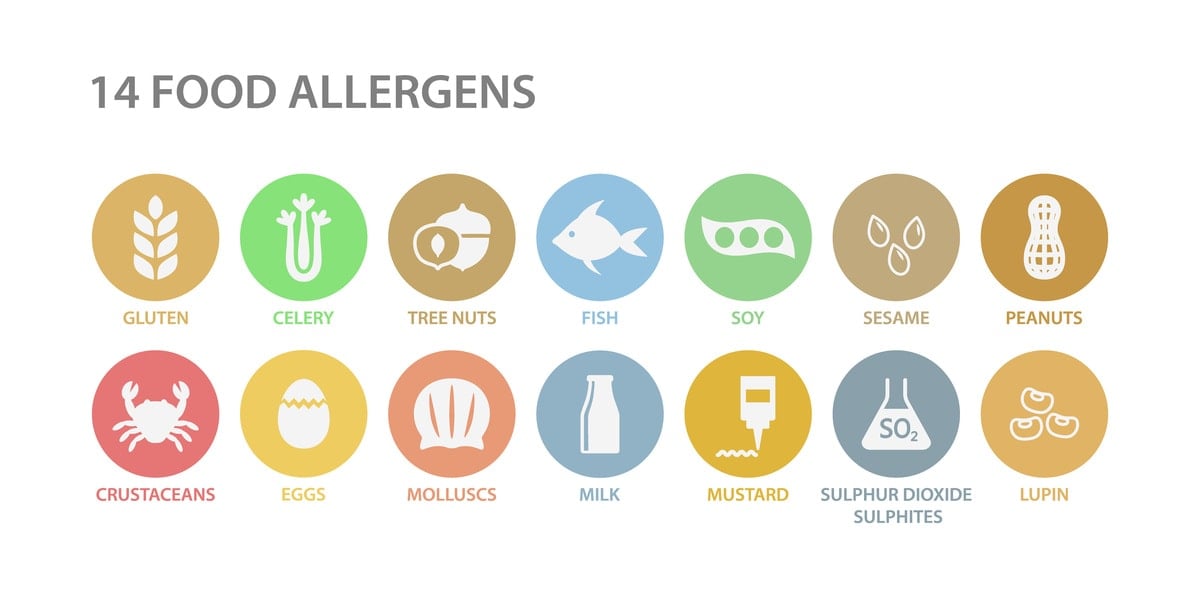
Can you consume too much celery?
Undoubtedly, celery provides us with many health benefits. However, when including celery in your diet, make sure to consume it in moderation. Because celery contains 80 grams of sodium for every 100-gram serving, consuming too much celery can lead to some health problems. As with anything, moderation is key. And, as we always say, consult your doctor before making any changes to your diet. They can help you determine just how much celery you should consume.
Allergies
Celery belongs to a small group of food that can provoke severe allergic reactions, including anaphylaxis, in people. For those allergic to celery, even the smallest amount consumed can cause a potentially fatal anaphylactic shock. Experts say that celery seeds may contain the most allergen, followed by the root, then the stalk. Anyone with a celery allergy must carefully check food labels because even small amounts can cause an allergic reaction. If anyone experiences an allergic reaction after eating celery, emergency medical attention should be sought.
Bloat, Gas, Diarrhea, and Malnutrition
A few months ago, Environmental Working Group (EWG) released their Dirty Dozen list, which ranks twelve vegetables bought from stores with the most pesticide residue on them. Unfortunately, celery ranked eleventh on the list; thus, experts suggest eating organic celery or growing your own.
Additionally, eating large amounts of celery can lead to malnutrition. While eating low-calorie food may be good for weight loss, celery contains hardly any protein and fat. Furthermore, because of the high water content, eating more celery means you will have less space to eat other food. As such, consuming a large amount of celery may lead to a nutrient deficiency. Finally, although fiber is great for the body, too much of it can also lead to bloating, constipation, gas, and diarrhea.
Goiters
According to experts, regularly eating large amounts of raw celery could lead to the formation of goiters. These goiters are formed when goitrogens—substances that can hinder iodine absorption in the thyroid—enter the bloodstream. A goiter can cause the neck to swell and lead to hypothyroidism, with the following symptoms: lethargy, fatigue, dull and dry skin, and weight gain. And, in some cases, it can become toxic and lead to hyperthyroidism.
However, while eating very large amounts of raw celery can act as a goitrogen, experts say that cooking destroys most of these harmful substances.
How Is It Consumed?
Stalk celery and celeriac can be eaten raw, but leaf celery cannot. Aside from eating them raw in a celery salad, celery can also be cooked, steamed, baked, juiced, blended into a smoothie, or used as an herb, seasoning salt, or garnish. Additionally, some people add diced celery to stir-fries, soups, and stews, or simply take the celery hearts and discard the outer stalks. Some also crush dried leaves to make celery salt, while others prefer the taste of braised celery.
Interestingly, celery is not just a great source of nutrition; others use celery extract as a mosquito repellent. In fact, research has shown that a gel containing 5 to 25 percent of celery extract can keep mosquitos away for up to 4.5 hours.
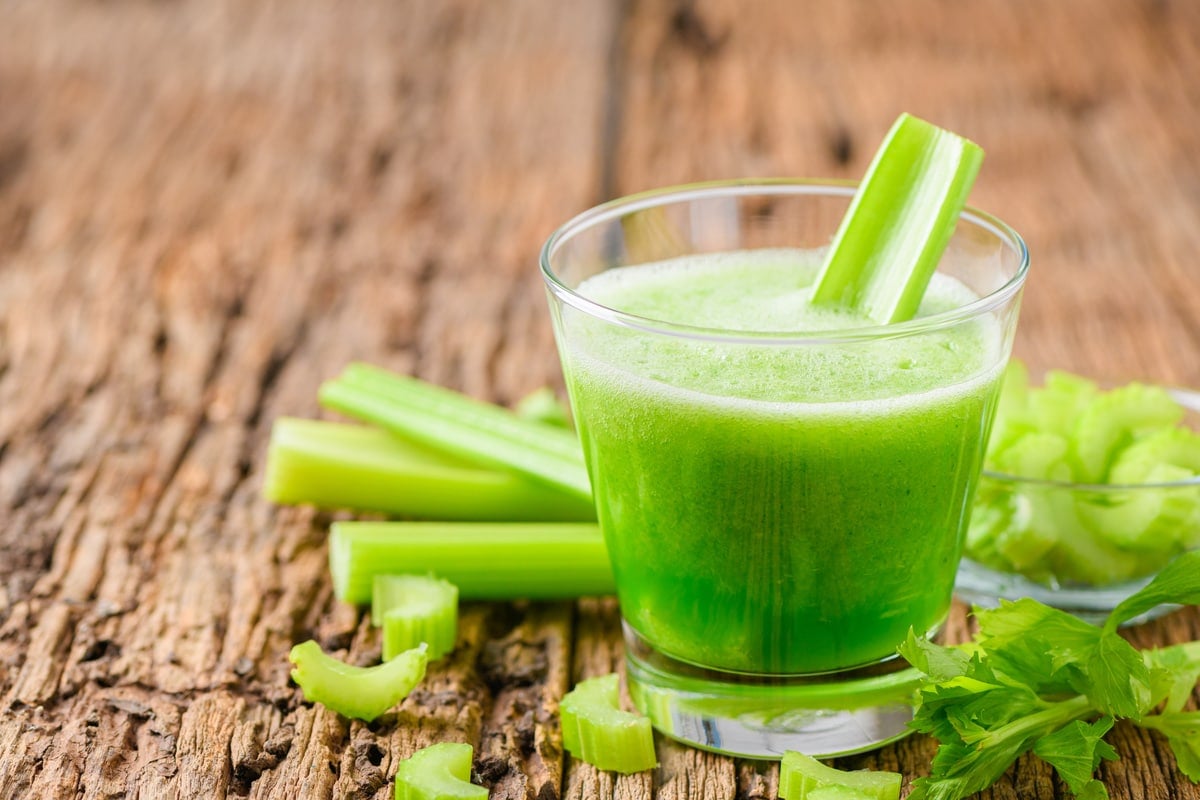
Adding Celery To Your Juice
Eating celery is a good way to introduce them to your diet, but you can also try juicing them instead, especially if you often find yourself not meeting the recommended eight 8-ounce glasses of water per day. Drinking fresh fruit and vegetable juice can help keep you hydrated while also providing you with most of the vitamins, minerals, and nutrients that the ingredients contain.
Over the years, juicing became increasingly popular for the many health benefits that it provides. It allows easier absorption of nutrients, aids digestion, boosts the immune system, reduces the risk of developing some chronic diseases, and also helps in weight loss. Aside from those, juicing also offers convenience for people often pressed for time. If you want a change of pace from eating raw kale as a snack, juice can also be brought and easily consumed on the go.
While juicing celery offers many health benefits, it also comes with some disadvantages. First, some fruit juices can contain more sugar than sodas, as 100% fruit juice contains concentrated fructose. Of course, the sugar content always depends on the ingredients juiced. To avoid blood sugar spikes, juicing enthusiasts recommend juicing mainly vegetables and adding a few slices of fruits for added sweetness. Secondly, most of the fiber that the fruits and vegetables contain often gets lost in the juicing process. And, lastly, juicing costs more than eating fresh fruits and veggies whether you make your own or drink store-bought ones.
Sample Celery Juice Recipes
Here, we recommend some of the best celery juice recipes we could find:
- Celery, Ginger, and Lemon Juice Recipe
- Easy Celery Juice Recipe
- Celery Juice Recipe
- Green Detox Celery Juice Blend Recipe
- Celery Juice with Lime Recipe
Adding Celery To Smoothies
For those who often do not have enough time to prepare breakfast, adding celery to smoothies can be a good idea. Just like juicing, drinking smoothies also keeps you hydrated and provides various health benefits. It can serve as a convenient source of nutrition for you on the go, as it takes only minutes to prepare a smoothie.
Some health enthusiasts prefer blending over juicing because smoothies retain all the fiber of the fruits and vegetables. This benefits gut health and aids digestion, and the fiber helps to satiate your hunger. Aside from fiber, smoothies also contain the vitamins, minerals, antioxidants, and other nutrients that the ingredients contain. All of these provide a boost to the immune system, lowers cholesterol, and lowers the risk of some chronic diseases.
Of course, blending has some downsides, as well. Similar to juicing, the nutritional content of your smoothie depends on what ingredients you use. It can contain too many calories or carbs, or it can also be nutritionally balanced. Because of this, we always recommend consulting your doctor before making any changes to your diet. They can either help you make a meal plan or refer you to a dietitian. Additionally, too much fiber can result in digestive issues.
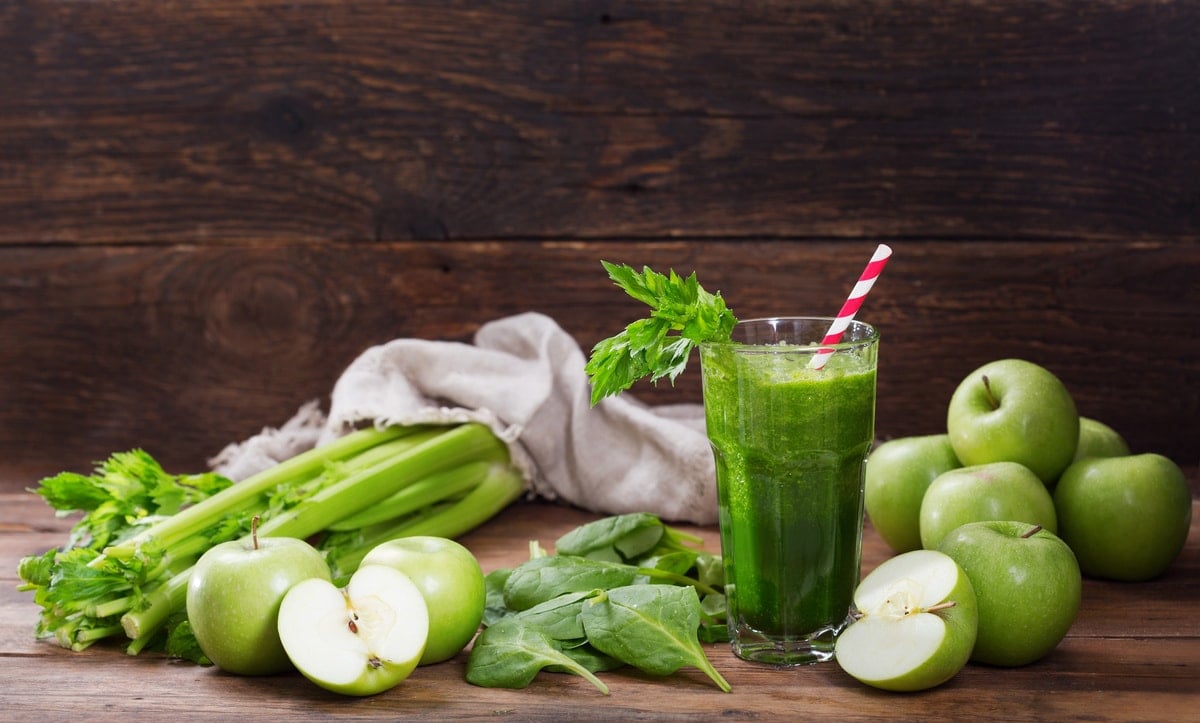
Sample Celery Smoothie Recipes
If you prefer blending over juicing, worry not. Here are some flavorful celery smoothie recipes that you can try:
- Pear Smoothie With Spinach, Celery, and Ginger Recipe
- Apple, Celery, and Cucumber Smoothie Recipe
- Celery Smoothie Recipe
- Green Detox Smoothie Recipe
- Apple Celery Smoothie Recipe
Sources:
https://en.wikipedia.org/wiki/Apiaceae
http://www.foodreference.com/html/celery-history.html
https://www.britannica.com/plant/celery
https://ipm.missouri.edu/MEG/2011/11/Celery-A-Brief-History/
https://www.sciencedirect.com/topics/medicine-and-dentistry/celery
https://homeguides.sfgate.com/different-varieties-celery-25710.html
https://www.gardeningknowhow.com/edible/vegetables/celery/different-kinds-of-celery.htm
https://www.homestratosphere.com/types-of-celery/
https://www.almanac.com/plant/celery
https://www.healthline.com/nutrition/celery-seed-benefits
https://www.livescience.com/50640-celery-nutrition.html
https://en.wikipedia.org/wiki/Celery
https://www.webmd.com/vitamins/ai/ingredientmono-882/celery
https://www.medicalnewstoday.com/articles/270678
https://www.healthline.com/health/food-nutrition/health-benefits-of-celery
https://www.active.com/nutrition/articles/6-best-hydrating-foods-for-athletes
https://www.healthline.com/nutrition/celery-benefits-for-men
https://www.livestrong.com/article/467082-the-effects-of-celery-on-your-digestive-system/
https://www.livestrong.com/article/472691-the-risks-of-eating-excess-celery/
https://www.healthline.com/health/food-nutrition/juicing-vs-blending

Leave a Reply